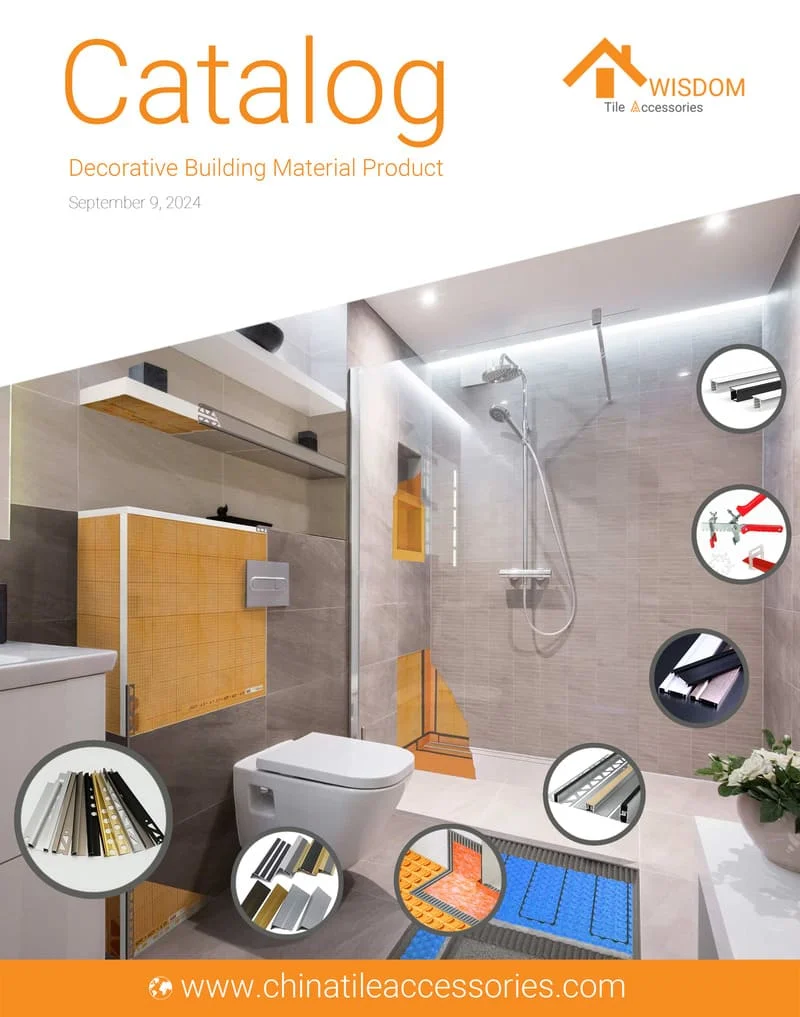What can result in hollow tiles?
A sturdy and long-lasting tile surface requires proper tile installation. The emergence of hollow tiles is a common issue that might occur. In this blog article, we will examine the world of hollow tiles, understand the risks connected with them, investigate the importance of appropriate tile installation, and discover how to avoid hollow tiles by utilizing the proper tools and procedures, including the proper use of tile leveling systems. We will also present real-life case studies of successful tile installations that used the proper tile leveling technology. You will have a thorough understanding of how to master good tile installation practices and avoid the emergence of hollow tiles by the end of this essay.

Hollow tiles generate by ground or wall
The so-called wall or ground grass-roots are caused by hollow tiles, that is, we are paving wall tiles or floor tiles before carefully checking the specific quality of the grass-roots level. Then, in the troublesome grass-roots tiling generated by the issue, Specific performance in the two areas listed below
· The natural wall or floor There is a big drum problem. Because of the terrible hollow tile issue, the wall surface of the plaster layer and the grass-roots separation, as well as the ground, are the same. And if we immediately paste the tile on this type of troublesome ground or wall, the paste material will create tile and grass-roots separation, resulting in the problem of hollow tiles.
· The wall or the floor is severely weakened. The most typical sand-falling scenario is that when we tile paving at the grass-roots level, there is a so-called serious loss of strength. As we all know, the ability to paste the tile is based on the paste material and the grassroots working together. If the grassroots lack strength, the paste material cannot paste. Later, the surface of the plaster layer or the ground grass-root separation appears, causing the same problem as the formation of significant hollow tiles.
Measures:
1. Before we start gluing wall or floor tiles, we must first assess the problem at the grass-roots level. If serious hollow tiles and falling sand, etc., exist at the grass-roots level, it is not permitted to paste tiles.
2. If major hollow tiles, sand, and sand are present, my personal advice is to take off all of these portions before re-hanging plaster to satisfy the qualified requirement.
3. It is not suggested to brush wall solids on the wall when gluing tiles on it. Furthermore, for the wall's waterproofing, a good job of hair pulling or hair spraying treatment is required.
Hollow tiles are caused by the paving material.
The so-called paving material caused by hollow tiles is that we pave wall tiles or floor tiles using the material, which has some issues and cannot accomplish its required strength of connection. And the hollow tiles as a result of the special performance in the two following areas:
· When using regular cement mortar to paste wall tiles, the cement mortar ratio is incorrect. For instance, the sand content is excessive. Or the material is unqualified, such as when our cement expires and the sand includes too much mud. Alternatively, while using cement mortar to paste the wall, the base is excessively dry, leading the cement mortar to lose water. As a result, the cement mortar paste tiles will resemble hollow tiles.
· the application of a sticky tile adhesive 1. We purchased unqualified tile adhesive, and we purchased counterfeit materials. 2, the use of tile adhesive that is not in compliance with the mix's criteria. For example, arbitrary additions of water or cement 3, not in accordance with the requirements for the use of tile adhesive in the thin scraping layer of the wall, the thin scraping layer of tile adhesive in the rear of the tile, and so on. The hollow tiles are to blame for the above-mentioned tile adhesive issues.
Measures:
1. Select the appropriate paste material for the various types of tiles. For example, choosing tile adhesive based on the minimal water absorption of tiles It is not advised to use cement mortar paste.
2. We need to double-check the paste material we're using. For example, the most common cement and sand should be carefully tested for quality, with cement focusing on shelf life and sand focusing on muck content and particle size.
3. Some bonding materials must be obtained with quality assurance and then used in line with the specifications of the goods, which do not allow for the arbitrary inclusion of other materials.


Tiles cause the hollow tiles problem
The so-called tile itself is caused by the problem of hollow tiles in that, despite the fact that we use qualified materials, the wall grass-roots level is also in place, but the tiles and the material between the paste cannot be. These are additional arguments for the tile itself. The following two aspects are due to the common tile itself.
· The back of the tile has not been thoroughly cleaned. The presence of dust, oil, and other things on the reverse of the tile is the most typical issue. Or the tiles are not properly treated in accordance with the various paste materials. Tiles with significant water absorption, for example, must be soaked thoroughly before transport. When attached with tile adhesive, you cannot soak the tile's bottom absorbency, but just clean it.
· There is a releasing agent on the back of the tile. Mold release agents are used to separate tiles from mold. Some brands of tiles are in production before the usual to take care of the releasing agent. However, if we purchase some tiles without quality assurance, they may contain mold release agents on the back, which may adversely affect the tile paste.
Measures:
1. Before tiling, we should cleanse the back with clean water. Then place it in the shade to dry, and only then allow it to paste.
2. We must carefully inspect the back of the tile release agent. The releasing agent resembles a wax-like material. Rinsing with water allows us to see it. As long as there are release agent tiles, we must pursue the grinding route until all of the release agent is clean to utilize.
Hollow tiles caused by tile paving method
We select the appropriate material, deal with the grassroots, and also deal with the tiles, and we must take appropriate actions. Because the master tiler's craft determines whether the tile paste adheres securely or not. The following two components are primarily responsible for tile bulging and tiling practice issues:
· The tile paving is fake. The so-called tile paving is not genuine; when we install the wall tiles, we just press the tiles against the wall, softly tapping a few times. The lower section of the tile bonding layer should not be paved solid, as this will reduce adhesion. If this occurs across a large region, the result is hollow tiles.
· The tiles are not left in line with the seam criteria. At the moment, most of the tiles we paste must have a seam for paving. If we choose a seamless pavement for aesthetic or other reasons, the temperature of the tiles and thermal expansion and contraction may cause hollow tiles.
· Did not use the tile leveling systems correctly, resulting in hollow tiles after paving tiles.
Measures:
1. We must firmly guarantee that the tiler master is paving each tile solidly. This condition should not allow the tiles on the combined layer of false pavement. Paving tiles are commonly seen, so we must pay attention to this topic.
2. Whether our home wall tiles or floor tiles, leave a seam for paving while paving. Leave the seam width generally according to the manufacturer to perform matching stay seam cards; virtually everything can be.
3. One effective method to avoid hollow tiles is by utilizing tile leveling systems correctly. Tile leveling systems help ensure a level and even tile installation, minimizing the chances of hollow tiles. Here's how to use them:
4. Another ultimate solution is to use a tile vibration machine, a tool that can be used to flatten tiles efficiently and easily, allowing them to fit perfectly on the floor and thus effectively preventing hollow tiles.Want to know more? Here is it!
Conclusion
To eliminate the problems associated with hollow tiles, proper tile installation is essential. You may assure a long-lasting and faultless tile surface by understanding the reasons for hollow tiles and the necessity of good tile installation. Correctly using tile leveling techniques, as well as following extra suggestions to avoid hollow tiles, will help you obtain professional-quality outcomes. Select Awisdom for your tile leveling system requirements. We provide high-quality goods and professional service consulting to assure the success and longevity of your tile installation projects.
Remember that mastering the art of good tile installation is about more than just aesthetics; it is also about building a safe and long-lasting environment. You may outwit hollow tiles and accomplish attractive, long-lasting tile installations by following the recommendations and tips presented in this article.


